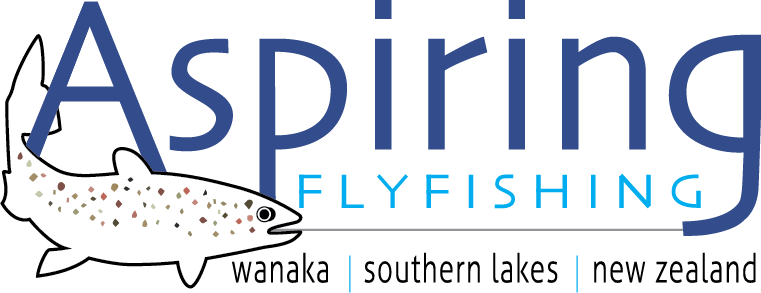Fishing Locations
Fly fishing in New Zealand is the ultimate trout fishing experience. Aspiring Fly Fishing can help you discover the fantastic fly fishing in our backyard here in New Zealand. We offer guided fishing trips to most South Island areas, including Queenstown, Wanaka, Westland, Te Anau, Twizel, and more.
Learn the secrets of just where and how to catch large Brown and Rainbow trout from Paul Macandrew; an experienced NZPFGA New Zealand fly fishing guide. Aspiring Fly Fishing will share with you those secret secluded places that only a local could know about.
A Little About New Zealand
New Zealand is 1,000 miles in length, 104,000 square miles in two main islands, the North and South Islands. New Zealand has a population of 4 million, mostly of English descent.
New Zealand is a land of contrasts, alpine mountain ranges, lush rain forests, pristine beaches, majestic fiords, volcanic peaks with plenty of green lush rolling farmland and sheep!
The weather patterns here in New Zealand are very changeable and can determine our options for the days fishing, so we have to be flexible with our plans and be ready for any eventuality, always having a Plan A, B, C and D!
I like to get an early start (roughly 7 am ) to maximise our time on the water as some days we may have a drive of approximately 1-1.5hrs to reach the river of choice for the days fishing.
The New Zealand trout fishing season here in the South Island commences on October 1st (for the West Coast and Lowland rivers) of each year and runs until the end of April and May for the Backcountry rivers. Some areas are not open until November 1st each season. The best fishing is generally from November to April when we can experience some awesome mayfly hatches in our rivers with the Southland region really coming into its own. New Zealand trout fishing at its best!
Please consider the rights of others and practice good angler etiquette on our waterways!
Always ask permission from the landowner before crossing private property unless a Fish & Game access sign is present.
Do not park vehicles to block gateways or cause a hazard on the road or access ways.
Always use the gates, stiles or other recognised access points and avoid damage to farm fences.
Leave everything as you found it. If a gate is open or closed, leave it that way as farmers may be moving large numbers of stock around.
A farm is the owner's livelihood, and if they say no dogs, please respect this!
When driving on riverbeds, keep to marked tracks or park on the bank and walk the last stretch to your fishing beat.
Never push in on a stretch of river or stream that's being fished by another angler. If you are in any doubt, have a chat and work out who goes where there's plenty of water for everyone!
However, if you agreed to share the pool, then always jump in behind any angler who's already there!
Fish being returned to the water should be released as carefully and quickly as possible. Ideally, leave the fish in the water to remove the hook with long-nosed pliers without handling the fish too much; always keep your fingers away from its gills.
While some widely promote catch and release fishing as a conservation-minded approach to angling, it remains the anglers choice. We at Aspiring Fly Fishing encourage catch and release.
However, catching large numbers of fish in a day can impact individual fish and the angling experience for others. Fish & Game advocate hooking and landing a limited number of fish per day.
Fish being kept should be dispatched as quickly as possible.
Remove litter from the river banks and parking spots lets keep it clean and green!
The only way we can protect our rivers from Didymo and other invasive algae's in the long term is to CHECK, CLEAN and DRY all your gear before entering another river or lake anywhere in New Zealand.
But most importantly of all, remember to treat others as you would wish to be treated yourself whilst on the river!
Monthly Outline | Fly fishing New Zealand
OCTOBER
October 1st sees the New Zealand trout fishing season begin with opening the lowland rivers and streams. The weather can be variable, and water temperature still reasonably cool, but a good time to hit the smaller streams that are not as affected by the snowmelt and still have some larger trout residing in them. Angler numbers are lower at this time.
NOVEMBER
November 1st sees our backcountry rivers open for the season, a great time to be out on the water as things start to warm up, still some snowmelt in the larger rivers. The dry fly fishing is beginning to hot up with the appearance of Brown Beetles. Still, some large fish to be found in the smaller streams.
DECEMBER
One of my favourite months to be fishing still plenty of water in the smaller streams Caddis, Brown and Green beetles plentiful, and angler numbers still reasonably low.
JANUARY
January sees the kiwi holidaymaker on the waters, making it reasonably busy, terrestrial fishing starts to hot up good mayflies, and caddis hatches early morning and in the evening.
FEBRUARY
Peak month for our visiting anglers, smaller streams are at their lowest, so fish are warier, terrestrial/cicada fishing on the high country lakes is in full swing, and most trout will freely rise to a big dry.
MARCH
March Cicadas still on the wing, some fantastic dry fishing still to be had, visiting anglers are starting to thin out a little, and rivers can be relatively low. There is an increase in mayfly hatches as the days get cooler.
APRIL
Days are getting cooler; this sees some of our larger rivers experiencing some great mayfly action and our smaller spring creeks and streams, and the dry fly fishing can be excellent this time of year. April 30th sees the lowland rivers and streams come to a close for the spawning season.
MAY
Backcountry rivers are still open with some great fishing, you are still able to raise the odd fish with a dry fly, and a big streamer fly comes into its own on some of the bigger resident fish, angler numbers are now very low. The season closes on May 31st.
Rivers are now closed for spawning, but there are still a few options available for fishing in some regions if you don't mind the cold!
Lake river mouth fishing can be very productive over the winter months as trout congregate before starting their spawning runs.
Fly fishing New Zealand is something to put on the bucket list. Contact Aspiring Fly Fishing to plan your once in a lifetime New Zealand trout fishing adventure!
New Zealand Fly Fishing Guides Dry Fly Box
A few of the more productive patterns I carry in my fly boxes are listed. If fished correctly, they have consistently produced the desired results in the right conditions and time of year. Some are standard patterns; others I have tied and developed myself based on my observations and experiences of fishing rivers over the years:
First Choice #10-18
Dad's Favorite #12-18 The best dun pattern there is!
Kakahi Queen #12-16 Great backcountry fly for those fussy browns who won't touch a big bulky dry.
Parachute Adams #10-18 Great searching pattern in bigger sizes with a weighted nymph tied beneath it.
Parachute Owaka #14-18 A super-slim tied dry fly for those tricky Mataura hatches.
CDC emerger quill #14-20 A must-have for those tricky Mataura river brown trout.
CDC spent spinner #12-18 Another must-have for those finicky Mataura brown trout.
Foam Blowfly #8-16 This fly accounts for a high percentage of fish over the warmer months.
Blue Humpy (green, yellow, brown, Red also work well here in NZ ) #10-16
Goddard Caddis #12-16 Great evening fly on those warm summer nights!
Stimulators (brown, green, yellow, dun and Royal) #10-14 Another excellent searching pattern in broken water over the warmer months.
Weta Imitation#4-8 Great for those West Coast fussy brownies!
Willow Grub #16-18 Must have if fishing on our low land rivers and streams in the height of summer.
Green foam beetle #14-16A must-have for those warm summer days when these guys are about!
Cochy-Bhondu #12-16 These appear around
Cicada #10-12 ( green, Tan, Black and chartreuse green) dry fly will bring big fish up from the depths over the summer months!
New Zealand Fly Fishing Guides Nymph Fly Box
Gold-ribbed Hare's Ear #8-18 A great attractor pattern and one that deceives more than its fair share of fish!
Hare-and-coppers #8 - 16 Another that's worth its weight in gold and covers most mayfly species in general.
Green free-swimming caddis #10-14 My most prolific fish catching nymph!
Horn-cased caddis #12-16
Gray caddis #10-14
Black Stonefly #8-14 Great back country searching fly in fast water.
Brown Stonefly #8 -14 Great back country searching fly in fast water.
Green Stonefly #8-12 Great back country searching fly in fast water.
Prince #10-14 Attractor pattern Rainbows, especially like this one in purple!
Midge pupa and larva in black and red #12-18
Corixa or Water Boatman #14-16 Super fly-in backwaters/still waters (especially on the Mataura!)
Damsel fly #8-12 Another super fly for backwaters and still water fly fishing.
Dragonfly nymph #6-12 Perfect fly for stalking on the muddier lake margins.
Pheasant Tail nymph #8-18 The most successful fly pattern in history!
Black and Peacock or B&P A fantastic snail imitation again in backwaters and still waters, especially on the Mataura River.











